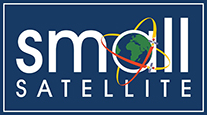Session
Technical Session VII: Instruments & Sensors
Abstract
The Student Nitric Oxide Explorer (SNOE) is a small satellite to be designed, built and operated at the University of Colorado under the Student Explorer Demonstration Initiative (STEDI) from the Universities Space Research Association. The goal of the STEDI program is to demonstrate that low cost satellite missions can be done with large student involvement. The primary science goals of SNOE are to measure thermospheric nitric oxide (NO) and its variability over the lifetime of the mission. SNOE will also monitor the solar irradiance at soft X-ray wavelengths and the auroral energy deposition at high latitudes. Three science instruments are required to achieve the simultaneous measurements: an ultraviolet spectrograph for NO; a solar soft X-ray photometer; and a far ultraviolet photometer for studying the aurora. The instruments are designed to represent a minimum impact on the spacecraft, particularly in terms of data storage and interactions with the command and data handling system. The focus of this paper is the outline of the design of the science instruments and the trade studies which were made. In particular, we discuss why these instruments are well suited for smaller, lower cost satellite missions.
Science Instrumentation for the Student Nitric Oxide Explorer
The Student Nitric Oxide Explorer (SNOE) is a small satellite to be designed, built and operated at the University of Colorado under the Student Explorer Demonstration Initiative (STEDI) from the Universities Space Research Association. The goal of the STEDI program is to demonstrate that low cost satellite missions can be done with large student involvement. The primary science goals of SNOE are to measure thermospheric nitric oxide (NO) and its variability over the lifetime of the mission. SNOE will also monitor the solar irradiance at soft X-ray wavelengths and the auroral energy deposition at high latitudes. Three science instruments are required to achieve the simultaneous measurements: an ultraviolet spectrograph for NO; a solar soft X-ray photometer; and a far ultraviolet photometer for studying the aurora. The instruments are designed to represent a minimum impact on the spacecraft, particularly in terms of data storage and interactions with the command and data handling system. The focus of this paper is the outline of the design of the science instruments and the trade studies which were made. In particular, we discuss why these instruments are well suited for smaller, lower cost satellite missions.


